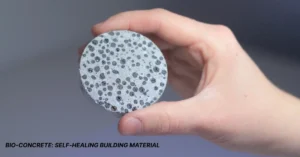
5 Sustainable Technology Innovations Making a Real Difference
- 68
- 0
- 0
Sustainable technology is changing the world by reducing environmental harm and promoting greener solutions. Solar energy is leading the way, providing clean power while cutting electricity costs. Electric vehicles (EVs) are reducing pollution, making transportation eco-friendly. Smart farming helps farmers use water and fertilizers efficiently, improving crop production while protecting the environment. Green building technology uses energy-efficient designs and renewable materials to create eco-friendly homes and offices. Waste-to-energy solutions convert waste into useful resources, reducing landfill pollution.
These innovations are shaping a sustainable future, making industries more responsible and reducing carbon footprints. By adopting these technologies, businesses and individuals can contribute to a cleaner planet. The future of sustainability depends on innovation, and these advancements are making a real difference in protecting our environment.
5 Sustainable Technology Innovations Making a Real Difference
Technology continues to play a key role in creating a more sustainable future. Let’s look at five impressive sustainable technology innovations that are helping protect our environment and reduce our impact on the planet.
Solar Windows: Turning Glass into Power Plants

Regular windows are getting a remarkable upgrade. Solar windows use special transparent solar cells that turn ordinary window glass into electricity generators. These windows look just like normal glass but have a thin coating that captures solar energy while still letting natural light shine through.
The technology works by using tiny organic molecules in the glass coating that absorb invisible ultraviolet and infrared light. This absorbed light is then converted into electricity that can power buildings. A typical solar window can produce about 50 watts of power per square meter, enough to charge several phones or run LED lights.
Many office buildings are starting to install these windows during construction or renovations. For example, the Edge building in Amsterdam uses solar windows as part of its energy system, helping it become one of the most sustainable office buildings in the world. While the technology currently costs more than regular windows, prices are dropping as production increases.
Ocean Plastic Cleanup Drones

Plastic pollution in our oceans has become a major environmental problem. New autonomous drones are now helping clean up this mess. These water-based robots use artificial intelligence and sensors to find and collect plastic waste from the ocean’s surface.
The drones work like floating vacuum cleaners. They move slowly through the water, sucking up plastic pieces and storing them in onboard containers. Special cameras and sensors help them tell the difference between plastic waste and marine life, so they don’t harm any sea creatures.
Each drone can collect up to 500 kg of plastic waste per trip. When their storage containers are full, they return to shore automatically to empty their load. This plastic is then sorted and sent for recycling. Several coastal cities in Asia and Europe are already using fleets of these drones to clean their local waters.
Smart Urban Farming Systems

As cities grow bigger, feeding everyone sustainably becomes more challenging. Smart urban farming systems are bringing food production into cities using advanced technology and very little space.
These systems use vertical farming techniques, where crops grow in stacked layers inside buildings. Special LED lights provide the exact light wavelengths plants need to grow. Automated systems control temperature, humidity, and water use. The plants grow in a water-based solution instead of soil, using 95% less water than traditional farming.
A single smart urban farm the size of a supermarket can grow as much food as 100 acres of regular farmland. They can produce fresh vegetables year-round, regardless of weather conditions. Cities like Singapore, Tokyo, and London now have several of these farms supplying local restaurants and grocery stores with fresh produce.
Bio-Concrete: Self-Healing Building Material

Regular concrete often cracks and needs repairs, using up more resources and energy. Bio-concrete solves this problem by fixing itself, just like how our skin heals cuts.
This amazing material contains tiny capsules filled with bacteria and calcium lactate. When cracks form in the concrete, water gets in and breaks open these capsules. The bacteria then wake up and start eating the calcium lactate, producing limestone. This limestone fills the cracks, preventing them from getting bigger.
Bio-concrete can fix cracks up to 8 millimetres wide. Buildings and bridges made with this material last longer and need fewer repairs. Several construction projects in Europe have started using bio-concrete, especially in structures that are hard to maintain, like underground parking garages and tunnels.
Energy-Harvesting Roads

Roads are getting smarter too. New energy-harvesting roads can collect energy from cars driving over them and turn it into electricity. These roads use special materials and systems built into the road surface to capture energy from pressure, vibration, and heat.
When cars drive over these roads, they create pressure and movement. The road surface contains materials that convert this mechanical energy into electrical energy. Some systems also capture heat from the sun and tyre friction. The electricity generated can power street lights, traffic signals, or even charge electric vehicles.
A one-kilometre stretch of energy-harvesting road can generate enough electricity to power 800 homes. Test roads are already working in several countries, including France, China, and the Netherlands. While installation costs are currently high, the long-term benefits make them a promising investment for busy highways and city streets.
Impact and Future Development
These innovations show how technology can help create a more sustainable world. As these technologies improve and become cheaper to produce, we’ll likely see them used more widely. Many cities and companies are already planning to include these innovations in their future development plans.
Scientists and engineers continue to work on making these technologies even better. They’re finding ways to make solar windows more efficient, improve the AI in cleanup drones, grow more types of crops in urban farms, enhance bio-concrete’s healing abilities, and increase the power output of energy-harvesting roads.
The key to making these innovations successful is putting them to use in real-world situations. As more people see these technologies working effectively, demand will grow, leading to lower costs and wider adoption.
Looking Forward
These five innovations are just the beginning. Many other sustainable technologies are being developed and tested right now. From new types of renewable energy storage to more efficient recycling systems, technology continues to offer solutions to environmental challenges.
Everyone can help support these innovations by learning about them, supporting their development, and encouraging their use in local communities. The more we use and improve these technologies, the better equipped we’ll be to create a sustainable future for everyone.
Remember, creating a sustainable world isn’t just about big technological innovations. It’s also about using these technologies wisely and combining them with other environmental efforts. When we use technology thoughtfully, we can make real progress in protecting our planet for future generations.
FAQs
What is sustainable technology?
Sustainable technology refers to creations designed to lower environmental effects. These solutions focus on energy efficiency, waste reduction, and renewable resources, helping businesses and individuals create a greener, more sustainable future.
How does solar energy contribute to sustainability?
Solar energy harnesses the sun’s power, reducing reliance on fossil fuels. It provides a clean, renewable energy source, lowering carbon footprints and energy costs while promoting long-term environmental sustainability for homes and businesses.
What role do electric vehicles (EVs) play in sustainability?
EVs reduce greenhouse gas emissions by eliminating fossil fuel consumption. With advancements in battery technology and charging infrastructure, they offer an eco-friendly transportation alternative, helping to combat climate change and air pollution.
How does smart farming support sustainability?
Smart farming uses AI, IoT, and data analytics to optimize resources like water and fertilizers. It boosts crop yield, reduces waste, and promotes eco-friendly agricultural practices, ensuring food security with minimal environmental impact.
Why is green building technology important?
Green building technology incorporates energy-efficient materials, renewable energy, and smart systems to reduce environmental impact. It enhances indoor air quality, lowers energy consumption, and creates sustainable spaces for living and working.
Also Read:
5 Technology Innovations Transforming Modern Healthcare
References:
https://en.wikipedia.org/wiki/Category:Sustainable_technologies
https://en.wikipedia.org/wiki/Environmental_technology
https://sustainabilitymag.com/top10/top-10-green-technology-innovations
Disclaimer: This blog provides general information on sustainable technology innovations. It is not professional advice. Readers should conduct further research or consult experts before making decisions. We are not responsible for any actions taken based on this information.



